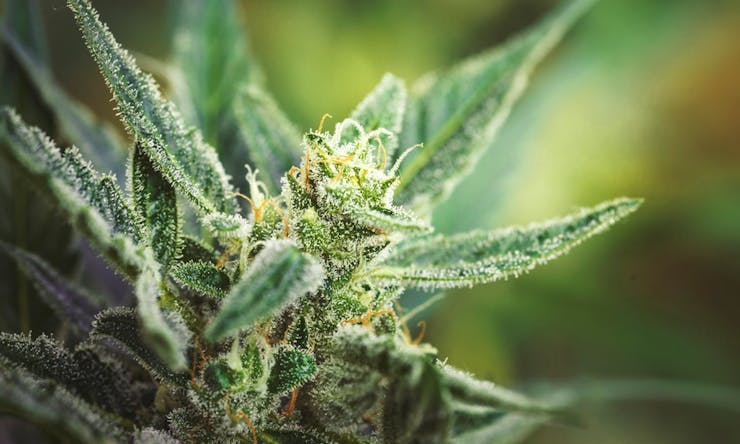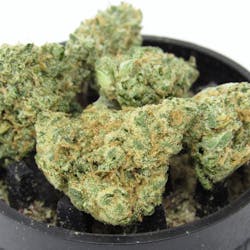When it comes to cannabis, there is quite a bit more than what meets the naked eye. If you fancy the flower, at some point in time you have probably asked yourself about those tiny little crystals that always seems to cover the leaves and buds of your favorite strains. They tend to be shiny, sticky, and always carry the most amazing aromas. Upon looking closer, however, these blankets of frost appear to be large collections of what are known as trichomes.
The actual definition of trichome is “fine outgrowths or appendages on plants, algae, lichens, and certain protists.” Originating from the Greek word “Tríchōma,” meaning “growth of hair,” these tiny microscopic mushroom-looking protuberances look like something out of a science fiction novel. But they are actually the very factories that produce the hundreds of known cannabinoids, terpenes, and flavonoids that make our favorite cannabis strains potent, unique, and effective.
The function of trichomes on cannabis

Space-age cacti, or cannabis trichomes? You decide. (Gleti/iStock)
The production of trichomes can be observed in many species of plants throughout nature, taking on various physical forms as well as serving many different purposes. For example, trichomes found on some carnivorous plants aid in helping to catch prey.
In cannabis, trichomes function as a defense mechanism. When female cannabis plants begin to produce flowers in the wild, they often become vulnerable to various insects and animals as well as non-living environmental variables such as potentially harmful UV rays. Trichomes serve as a deterrent for animals because their bitter taste and strong aromas render cannabis flowers unpalatable. At the same time, they also serve a dual function in protecting their plants from damaging winds and even some varieties of fungal growth.
The different types of trichomes on cannabis

Trichomes can appear in a range of colors, including bright orange.
Trichomes exist in many shapes and sizes, but there are three that appear most often on cannabis plants.
- Bulbous trichomes are the smallest of the bunch, and they appear on the surface of the entire plant. Bulbous trichomes are as small as 10-15 micrometers, which is tiny enough to only be comprised of a handful of cells.
- Capitate sessile trichomes are slightly larger and contain both a head and a stalk. These trichomes are quite a bit more abundant than their bulbous brethren, but cannot hold a candle to the bountifulness and size of the third trichome variety.
- Capitate-stalked trichomes range from anywhere between 50-100 micrometers wide, meaning they’re much larger and can actually be seen by the naked eye. Their structure consists of a stalk comprised of epidermal and hypodermic cells that build up to a basal cell which attaches to a large gland head. This gland head, held together by a waxy cuticle layer, serves as the epicenter for cannabinoid and terpenoid synthesis.
All three types of trichomes produce cannabinoids, though it is the capitate-stalked trichomes that will appear in abundance in and around the calyxes of budding flowers, producing the highest concentration of essential oils due to their size.
Shop highly rated dispensaries near you
Showing you dispensaries nearTrichome production and lifecycle

What a fuzzy wuzzy plant!
Cannabinoid synthesis within the trichome begins as cannabis plants move into their bloom phase. As they begin to produce flowers, trichomes form along the outer surface of the above-ground plant vegetation and begin to transport vacuoles and plastids from their stalk into the gland head. At this point, cells within the gland head will begin to metabolize and form precursors for what will eventually become cannabinoids.
The rate and concentration at which a cannabis plant produces trichomes will be contingent on both genetics well as some environmental factors. Though plants containing higher concentrations of trichomes don’t always produce the highest concentration of cannabinoids and/or terpenes, variables such as UV light greatly affect cannabinoid and terpene synthesis within the trichome head. Typically, plants that receive a broader spectrum of light will produce higher concentrations of cannabinoids, though in many cases these reactions will be strain-specific.
A trichome’s lifecycle largely parallels that of the cannabis plant on which it resides, making it incredibly valuable for farmers to monitor. The life of a trichome can be analogous to a parabola, where the apex represents the point at which maturation exceeds and degradation begins. For the most part, trichomes will display maturation on this parabola by changing opacity from a clear translucent state to a cloudy white and, later on, amber hue.
This transition of color within a trichome head represents its peak ripeness and farmers typically use this as a sign to harvest, as it’s the point when the trichome has reached full maturation and will begin to degrade from this point forward. It is important to understand that not all strains of cannabis are the same and some trichomes will display maturation differently. Nevertheless, trichome coloration remains the standard for determining a harvest time for most strains.
Whether alive on a vine or harvested, trichomes are incredibly volatile and risk destruction and/or degradation at the hands of many catalysts, including but not limited to:
- Physical contact or agitation
- Heat
- Light
- Oxygen
- Time
Not only do the trichomes themselves risk damage when exposed to these elements, but the essential oils within them risk degradation. There are ways to dramatically slow degradation of trichomes by carefully handling cannabis flowers both during propagation and post harvest. By limiting physical contact and agitation to the flowers themselves, trichomes may be preserved on the plant for longer periods of time. Proper trimming, drying, and curing techniques can help keep trichomes viable for longer, which in turn will preserve the cannabinoids and terpenoids contained within.
Those looking to extend the shelf life of trichomes beyond that of the plants they came from often resort to extraction techniques. An extraction in this context may be defined as the process of either mechanically or chemically removing trichomes from the plant itself. There are a myriad of methods and techniques for extracting trichomes from the plant material. These methods range from mechanical dry sifting practices that produce “kief,” to chemical extractions that utilize light hydrocarbons like butane or propane to create waxy full melt hash oils. If subjected to the right conditions, trichomes that have been separated and recollected by use of these methods can be stored indefinitely.
Cannabis trichomes truly do deserve a round of applause for their essential role in not only protecting a cannabis plant from the potential harms of the world, but also by providing a one-of-a-kind manufacturing facility for hundreds of known medicinally and therapeutically beneficial compounds exclusive to this amazing plant. Experienced cannabis farmers are no stranger to growing with the intention of preserving trichomes. With proper care and dedication, farming trichomes is and will remain the future of uncovering the vast mysteries of the medicinal and therapeutic qualities of cannabis.





